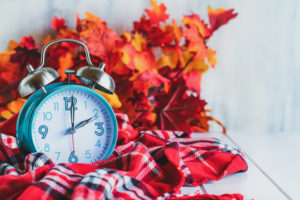
The return to standard time marks the end of daylight savings time, the period when clocks turn forward an hour.
But is all this time switching good for your body’s internal clock?
Your natural body clock generally follows the natural daily light cycle. It’s called a circadian rhythm, and it governs when your body disperses hormones like cortisol, adrenaline, and melatonin to guide the sleep/wake cycle.
Circadian rhythm also plays a role in your digestive system and microbial activity.
When this internal clock is disrupted, you’ll notice.
The return to standard time doesn’t seem as detrimental as the switch to daylight savings. The “spring forward” is associated with an increased risk for car accidents and heart attacks.
But that doesn’t mean that falling back occurs without a hitch. The long hours of darkness can increase the risk of depression, which can lead to fatigue and trouble concentrating while boosting the risk of heart disease, chronic pain, and inflammation.
Beating the impacts of the time change require a multi-faceted approach that starts with setting a sleep schedule. When you begin tiring out this evening earlier than you’d expect, fight the urge to tuck yourself in. Hold off on going to bed for 15 or 30 minutes.
Follow that trend for a few days, and you’ll likely start waking up when you want to.
The potential mental health risks of darker days may be enhanced this year. The COVID-19 pandemic and its effects on holiday plans can both make this season a little darker than normal.
If you have a history of feeling depressed in the winter (a condition called Seasonal Affective Disorder, or SAD), consider a lightbox. Also, consider ways to get outdoors and keep busy during the season.
One way to do this is to schedule exercise or other activities in the morning.
The calendar might not agree, but the return to standard time marks the beginning of the winter in some ways. Give yourself the tools you need to make it a seamless transition.